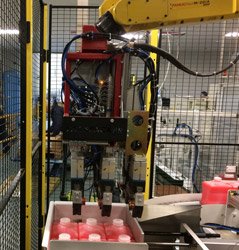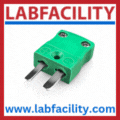
Posted to News on 31st Oct 2017, 10:32
Double packing boost for global hand hygiene company
In one of its most complex, largest and innovative projects to date, Pacepacker has more than doubled the output for a world-leading hand hygiene supplier by automating the case erection, loading and palletising tasks previously performed manually.

Comprising 15 individual elements, the use of cutting-edge 3D technology, and featuring products from nine different original equipment manufacturers (OEMs), this huge, fully automated line enabled Pacepacker to take home the Most Innovative Packaging Machinery Award at the recent PPMA awards ceremony.
Wanting to improve the versatility of its production plant and increase line packing speeds, Pacepacker was brought in to automate two labour-intensive manual packing production lines and palletising operation, creating a centralised, fully automated turnkey line. By solving the factory's reliance on multiple workers overseeing each packing element, Pacepacker estimates that it will cut annual workforce costs by around 400,000 a year.
One of the key challenges was the packing line needed to handle up to six different wholesale-sized occupational hand sanitiser bottlers, plus a combination of 70 pallet types and stacking patterns.
Done manually or automatically, picking up bottles and placing into cardboard outer sleeves can make it difficult to insert the last product into the box. To address the issue of high waste as a result of damaged bottles being forced into boxes, Pacepacker designed an alternative automated option that picks up an entire layer of product, adapting itself to the exact quantity of bottles required per box.
Pacepacker's Commercial & Information Systems manager, Paul Wilkinson explains: "While layered product loading is feasible for lighter weight and delicate product types, heavier items like bottles are typically loaded into cases individually or in smaller quantities."
To maximise production and investment efficiency, Pacepacker designed two packing lines feeding one palletising robot. A Simple Capture Automation vision system checks the barcode and checks bottle caps are secure. This is followed by a Thermo Fisher conveyor style checkweigher, and then an Endoline case erector, which automatically tapes each case bottom to form boxes for loading.
The software-driven adaptable robot end-effector, designed in-house by the Pacepacker team, grabs hold of the top of each bottle in one layer in a four, six or eight-bottle format. Meanwhile, Pacepacker's fully adjustable case-loading flap-opening device, located beneath the conveyor, holds all four box flaps 10mm clear of the loading operation. This helps to stop flaps becoming inverted during the loading process, making sure box integrity isn't compromised.
Cutting-edge 3D technology
Paul highlights: "The end effector is a truly innovative and unique feature. Around 70 per cent of case loading applications use vacuum, yet as there's no significant area on the top of each sanitiser bottle we designed a mechanical solution that grabs hold of the top of each bottle in two rows, in one movement." Pacepacker believes this could be the UK's first installation of an adaptive gripper that picks up and gently places a full layer of heavy bottled products (weighing between 1kg and 4.5kg each) into boxes using this method.
In order to create this end-effector, Pacepacker used the very latest 3D modelling and 3D printing technology on this project. Paul explains: "In many applications we now use 3D to create specific tooling, fixtures and grippers rather than relying on standardised components. In this instance, we sculpted and 3D printed a gripper to suit the handle of the bottles being picked up."
Replacing the customer's traditional roller manual palletising conveyor operation, Pacepacker designed a robotic palletising cell featuring two pick conveyors and two pallet conveyors. They used a high payload FANUC 4-axis M410-iC/85 robot, which picks up and places wooden pallets into position and lifts up to three boxes (weighing 18.6kg) in each movement, placing onto pallets in the programmed format. The cell can palletise up to two different SKUs at a time and helps to eliminate repetitive strain injuries frequently incurred during the loading and palletising of heavy cases.
To meet production and workforce safety standards, the complete palletising operation is contained within a guarded enclosure incorporating mechanical perimeter guarding, light guards and secure gates with control system interlocks.
Costing over half a million pounds, the cell took 8 months to design and engineer and measures 330 square metres. More than 50 Pacepacker team members and associate professionals provided input to this project.
Cycle speeds on each secondary packing/case loading line have increased to between 35 and 60 bottles per minute, compared with 24 bottles per minute when manual packing and using automation to load bottles into cases individually.
To minimise business interruption and ensure production didn't grind to a halt during the installation, Pacepacker delivered the project in three phases. The case loading lines were installed first, followed 5 weeks later by the palletising cell.
Paul enthuses: "The fully automated packing lines and palletising cell has increased the versatility of this busy production line. Although early days, the customer is already reporting that labour costs are down, line speeds improved and quality control has been tightened. There are also significant workforce health and safety and stock control benefits. By addressing the packing and palletising bottlenecks, production and warehouse space is being better used."
Go to www.pacepacker.com to learn more.
X
X
GLOBAL




